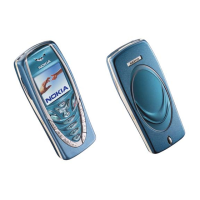7210 SAS-M, T, R6, R12, Mxp, Sx, S Basic System
Configuration Guide
System Management
3HE 17358 AAAB TQZZA © 2021 Nokia.
Use subject to Terms available at: www.nokia.com
281
• A packet rate of 1000 pps to 4000 pps is recommended. Lower packet rates
cause ACR to be more susceptible to PDV in the network.
• Limit the number of nodes traversed between the source-end and the ACR-end
of the TDM pseudowire.
• Enable QoS in the network with the TDM pseudowire enabled for ACR classified
as NC (network control).
• Maintain a constant temperature; temperature variations affect the natural
frequency on the internal oscillators in the 7210 SAS.
• Ensure that the network does not contain a timing loop when it is designed.
There are five potential ACR states:
•normal
• phase tracking
• frequency tracking
• holdover
• free-run
When a port’s ACR state is normal, phase tracking, or frequency tracking, the
recovered ACR clock is treated as a qualified reference source for the SSU. If this
reference source is used, transitions between any of these three states will not affect
SSU operation.
When a port’s ACR state is free-run or holdover, the recovered ACR clock is
disqualified as a reference source for the SSU. If this reference source is used,
transitions to either of these two states will cause the SSU to drop the reference and
switch to the next highest prioritized reference source. This can potentially be SSU
holdover.
6.5.8 IEEE 1588v2 PTP
The Precision Time Protocol (PTP) is a timing-over-packet protocol defined in the
IEEE 1588v2 standard 1588 PTP 2008.
PTP may be deployed as an alternative timing-over-packet option to ACR. PTP
provides the capability to synchronize network elements to a Stratum-1 clock or
primary reference clock (PRC) traceable source over a network that may or may not
be PTP-aware. PTP has several advantages over ACR. It is a standards-based
protocol, has lower bandwidth requirements, can transport both frequency and time,
and can potentially provide better performance.
The basic types of PTP devices are the following:

